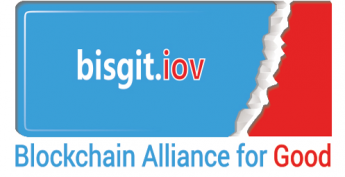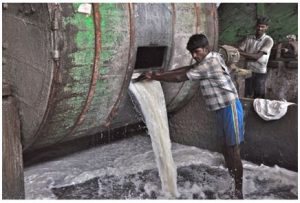[this project is one of the feeder attribute components of the crade-to-grave blockchain for leather provenance]
Water scarcity
Water is one of the most important natural resources on earth. About 71% of the Earth’s surface is occupied by water and only 29% consists of continents and islands. With 71% of the water on earth, only 3.5% is frozen water locked up in the polar ice caps and freshwater lakes. The remaining 96.5% of all the water on Earth is salty seawater (Williams and Williams). Water is becoming, even more, scares and it will soon become a commodity resource.
‘Water for Life Decade’ campaign of the United Nations (UN), has made it clear that every continent is already affected by water scarcity. Around 1.2 billion people live in a shortage of water and are faced with economic water shortage because other countries lack the necessary infrastructure to access the water from rivers and aquifers.
Water use in the Leather industry
In most cases, industries including tanneries require clean water to carry out their manufacturing processes. Leather making processes involve huge quantities of water, especially in the beamhouse steps. The Leather Working Group (LWG) is also aware of the water consumption in the leather industry, it designates that efficient tanneries consume about 127 liters of water whereas inefficient tanneries consume three times more than efficient tanneries, about 351 liters of water is consumed to produce 1 m2 of leather from raw to finished (LWG, 2010). This is a challenge that the leather industry is facing today; the industry consumes a lot of water and most of the water that is consumed ends up being polluted.
There are a lot of things involved during leather making processes, in fact, wastewater from the leather industry is considered to have huge amounts of organic and inorganic substances and its purification is a crucial activity around the globe (THORSTEN & MARTIN, 1996). Typically, the beamhouse steps generate high amounts of toxic, hazardous, and non-benign substances to the environment like salt, sulfide used for unhairing during liming sub-process and ammonia during deliming step. Leather production result into removal of undesirable things from the pelt, like; hair or keratin, unwanted protein, fat and other things, most of these things are removed using heavy chemicals.
According to the mass balance of chemicals in the leather processing by the United Nations Industrial Development Organisation (UNIDO), most of the chemicals used in the leather making process does not end up in the final product. A total of 452 kg/ton of chemicals of wet salted hide is added in the process but only 72 kg/ton of chemicals end up in or on our desired product, meaning that 84% of chemicals ends up in the wastewater (Jakov & Ivan, 2015). If an effluent is not discharged accordingly, it ends up contaminating the freshwater and indeed contribute to greywater footprint.
Leather industry in South Africa
South Africa has approximately 20 tanneries of different sizes which are in different parts of the country. These tanneries process more than two million hides/skins per year, and they consume about 0.6 million m3 of water (Steffen, et al., 1989)
South Africa being a water-scares country, it is crucial to use water responsibly and in a sustainable manner. Therefore, it is also important to explore new or better technologies to reduce water footprint in the South African leather processing plants.
Aims and objectives
Aims
• The main aim is to conduct a literature review on the latest technologies and assess the viability of the technologies contain within that review.
• To point out possible and acceptable latest technologies that will help to reduce the water footprint in the South African leather processing plants.
• Assess the best technology preferred by the South African leather processing plants
Objectives
.
• Collect water footprint data of the sub-processes involved during leather making process from at least five South African tanneries.
• Collect available data of the South African leather industries from other sources like the department of trade and industry (the DTI), that works closely with all the South African tanneries.
• Prepare semi-quantitative questionnaires, question and answers session, and ask them in a structured way to score the best technologies that can be implemented in the South African leather processing plants.
• Promote the technology that will possibly reduce the water footprint within the South African leather industry based on collected data analysis.
Methodology
To collect data and evaluate the challenge that the South African leather processing plants are facing, an accessible and dynamic semi-quantitative questionnaire will be developed. The presentation about the available and practical technologies on the reduction of water footprint will be prepared and presented to the South African tanneries. The main aim of this presentation is to expose the latest technologies that are commercially available that the South African industries are not familiar with. These will also encourage them to share the latest technologies that they aware of and also be able to share their knowledge by assessing which technology is the best bases on different reasons that they might know of. Question and Answers sessions will also be performed in order to the information that will be useful for this research.
The questionnaires will be asked in a structured manner and they will be asked in a fixed question list.
I will then critique and Annalise the data collected based on the questionnaires and question and answers sessions and carry out my study on it.


